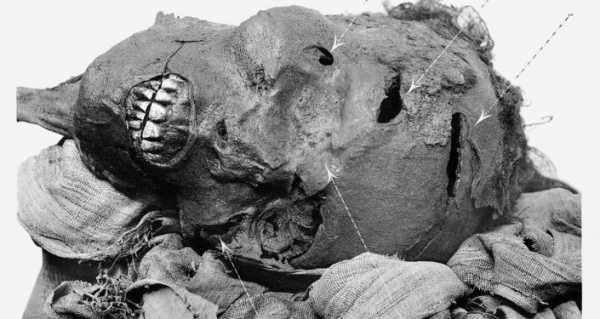
The new discoveries were made thanks to a CT scan of the pharaoh’s remains, as they revealed lesions that were carefully concealed by those who embalmed his body.
Seqenenre Tao, a pharaoh who ruled southern Egypt in the mid-16th century BC, met his end in a ceremonial execution conducted after he was captured in battle with a foreign Hyksos dynasty from the north, the Daily Mail reports.
According to the newspaper, since the pharaoh’s mummified remains, originally discovered in 1881 within the necropolis in Thebes, didn’t seem to have sustained any wounds, while his head bore indications of several severe injuries, the exact manner of his death has been a subject of debate.
A CT scan of the ruler’s remains, however, revealed “previously undetected lesions” that were apparently concealed by the people who performed the embalming, with scientists behind the new study determining that the pharaoh had his hands bound behind his back.
The researchers also established that the pharaoh was likely executed by several attackers, as the injuries upon his body were apparently delivered by five different Hyksos weapons.
Sourse: sputniknews.com






